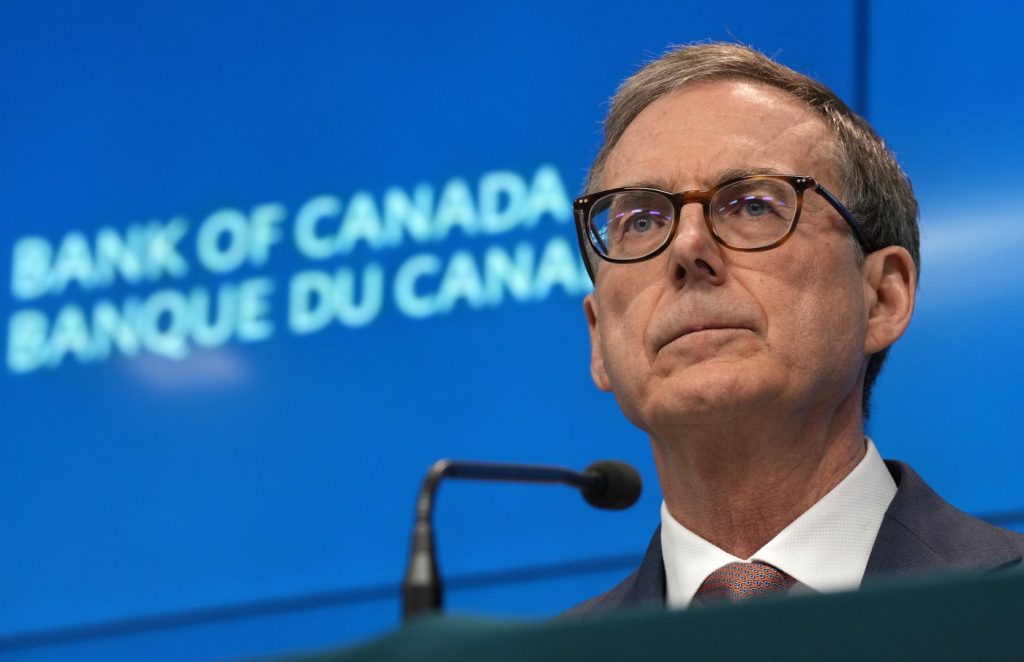The Bank of Canada is widely expected to keep its benchmark interest rate unchanged at 2.75 per cent in its upcoming decision on Wednesday, as economists and market watchers cite ongoing trade tensions and persistent inflation as key reasons for caution.
CIBC’s chief economist Avery Shenfeld says while there’s always a possibility the Bank may surprise markets with a rate cut, such a move would be a “pleasant surprise.” However, he admits he’s “not holding out that much hope.”
As of Friday, financial markets placed the odds of a quarter-point cut at just seven per cent, according to LSEG Data & Analytics. This restrained expectation follows a stronger-than-expected labour market report and continued inflationary pressures. Statistics Canada reported an unexpected gain of 83,000 jobs in June, nudging the unemployment rate lower for the first time since January. Meanwhile, inflation edged up to 1.9 per cent, with core inflation staying near 3 per cent — a stubborn figure the Bank closely monitors.
RBC economists Claire Fan and Abbey Xu believe sticky inflation, a still-resilient economic backdrop, and the potential for increased fiscal spending all argue against further rate cuts for now. Still, Shenfeld sees a different trajectory. CIBC forecasts two more quarter-point cuts this year, driven not by recent data but by signs of future economic slack. He points to the broader weakness in the labour market — despite the June surge — and expects that Canada’s ongoing trade dispute with the U.S. likely caused a contraction in the second quarter.
This economic slack, Shenfeld argues, should ease inflationary pressures in the coming months. The Bank’s own business outlook survey indicates many companies are absorbing higher tariff costs rather than passing them on to consumers, suggesting the inflationary impact of tariffs may be limited. Shenfeld believes once the Bank is confident that tariff-driven inflation is temporary, policymakers will feel ready to resume rate cuts.
Bank of Canada Governor Tiff Macklem has acknowledged the central bank is taking a more cautious, reactive approach to monetary policy amid trade uncertainty. Notably, the Bank did not issue a formal economic forecast in its April report, instead presenting two possible scenarios based on tariff outcomes.
Desjardins chief economist Jimmy Jean believes the Bank now has enough clarity to resume traditional forecasting in this week’s Monetary Policy Report. Still, with U.S. President Donald Trump threatening new tariffs of up to 35 per cent on Canadian imports starting Friday — unless a trade agreement is reached — uncertainty remains a dominant theme. Jean notes that CUSMA-compliant goods may be exempt, but targeted tariffs on key sectors like steel, aluminum, and copper could weigh heavily on Ontario and Quebec.
RBC and other forecasters believe the central bank may have already reached the end of its rate-cutting cycle, instead leaving future economic stimulus to government spending. Ottawa has already moved to increase defence and infrastructure funding, which may provide support down the road.
Nevertheless, Jean argues the impact of those fiscal measures will take time to materialize. He says September could still be a window for the Bank to act, particularly if trade tensions escalate. “We think, despite those measures being in the pipeline, the Bank of Canada will still in September have a valid reason to cut interest rates,” Jean said.

